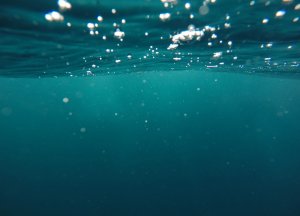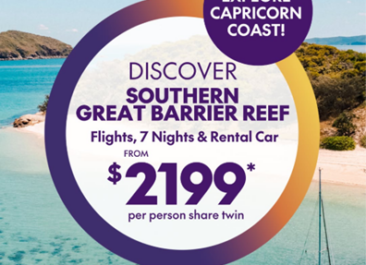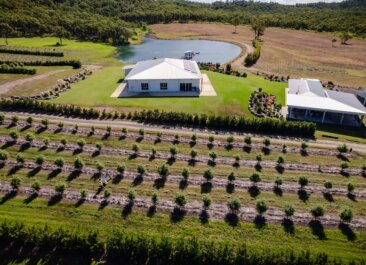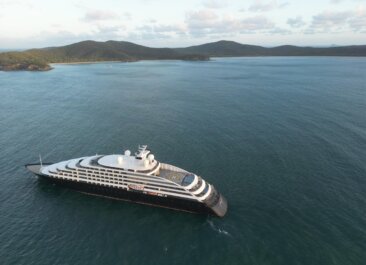Facts about Queensland shark drumlines
Posted on September 25th, 2019
Edited 10 February 2020
Shark drum-lines back in Queensland
The Australian Government
has committed $5 million to the Queensland Government to improve swimmer safety
in the Great Barrier Reef Marine Park, by reinstalling standard shark drumlines
while investing in modern technologies to mitigate the risk of shark attacks,
and moving to a shark control program which is consistent with the requirements
of the courts.
$4 million will assist the Queensland Government in adopting modern
technologies including smart drum lines, drone surveillance, swimmer education
and safety netting, while it also reintroduces its standard drum lines.
In the Whitsundays, which present a different set of challenges, and where
there have been some recent shark attacks, the Australian Government will
invest $1 million for:
- research to improve our understanding of shark biology, ecology, population status and behaviour in the Whitsundays;
- trials of technological advances in shark control measures such as near real-time alerts (e.g. through a sightings app) or drone surveillance in the Whitsundays.
Federal Member for Capricornia and Assistant Minister for Children and Families said it’s important to note that drum lines will now go back in the water.
“People can now have a greater sense of reassurance and safety while visiting the marine park’s 23 coastal beaches, from South of Gladstone to just north of Cairns,” Ms Landry said.
“I think both sides accept that the public is interested in outcomes not finger pointing between governments.
“That is why we have worked hard to resolve this process The Federal Government has provided considerable funding to help get that agreement in place,” Ms Landry said.
Ms Landry also acknowledged legislative solutions were not a timely solution.
The government is advised that following appropriate training led by Biopixel and attended by NSW Fisheries and Aussafe, the Queensland Department of Agriculture and Fisheries intends to re-deploy approximately 120 drumlines in the Marine Park by mid-February.
25 September 2019
The Humane Society recently wrote to all Local Government Authorities in Queensland with the following information:
Humane Society International understands the concerns regarding changes to the Shark Control Program. We would like to take this opportunity to clarify the ruling and any perspectives that may have been attributed to us.
- It is wrong to portray this as sharks versus humans. The Administrative Appeals Tribunal found “overwhelming” evidence that killing sharks does not reduce the risk of shark bite. Therefore culling programs are ineffective at protecting ocean users. The program is about providing a ‘perception’ of safety rather than a reality, which the Tribunal found “superficially attractive, albeit unscientific.”
- Queensland Fisheries’ own expert witness, Associate Professor Daryl McPhee, conceded that he has never, and would never advocate for a lethal shark control program.
- The ruling did not mandate the removal of drumlines from the Great Barrier Reef, only that they be managed more humanely. The drumlines must be checked daily, and animals found alive, which are often threatened species, must be released, sparing as many as possible from suffering prolonged deaths.
- The target shark list has been discontinued. Nineteen species of shark, most of which pose an extremely small to non-existent risk, will no longer be shot when found alive. Larger specimens of bull, tiger, and great white sharks are to be tagged and relocated offshore. WA and NSW currently run safe tag and release programs for these species. There is no reason Queensland contractors cannot do the same with appropriate training.
- Humane Society International will not criticise the Queensland Government for taking reasonable time to implement the orders, purchase equipment and train contractors. The court ruling provided below allows for this flexibility.
- The revised Shark Control Program recommended by the Tribunal will improve swimmer safety through the use of SMART drumlines, personal shark deterrents, and drone surveillance.
- No further legal action was planned, or is being planned, by Humane Society International.
- We strongly support the Queensland Government’s SharkSmart advice. Providing this advice to ocean users is the most effective way to protect them:
- Don’t swim at dawn or dusk.
- Always swim in clear water (not in murky water, busy anchorages, estuary mouths or canals).
- Don’t throw food scraps or fish waste overboard (including in anchorages or where people are swimming).
- Don’t swim where fish are being cleaned.
- Swim, surf, snorkel or dive with a buddy.
- Follow local signage and swim between the flags at patrolled beaches.
The AAT orders present an opportunity for the Queensland Government to modernise their shark control program to make it more effective at protecting ocean users while also preserving the ecology of the Great Barrier Reef. We would like your support to see them implemented.
The Minister for the Environment does not need to amend the Great Barrier Reef Marine Park Act. The judgement allows drumlines to remain in place while a sensible and orderly transition to a more modern and more effective approach is researched, trialled and implemented. It would be a travesty if the laws protecting the Marine Park are weakened to allow the retention of an outdated program from the 1960s that scientists and the court have all said, unequivocally, does not work.
Thank you for your time and I hope this provides clarification on what has become a very muddled issue. I would be happy to provide any further information you might require.
AAT ORDERS FOR OPERATION OF QLD SHARK CONTROL DRUMLINES
The current permit is to be varied to include a condition requiring the permittee (Great Barrier Reef Marine Park Authority) to carry out the Shark Control Program in a manner that avoids, to the greatest extent possible, the lethal take of shark species;
- The target shark list is to be removed from the current permit;
- The current permit is to be varied to ensure that the euthanasia of sharks caught on the drum lines is only to be undertaken on animal welfare grounds, specifically when a shark is unlikely to survive release due to its condition or an injury, or which cannot be safely removed alive due to weather conditions or hooking location;
- The current permit is to be varied to ensure sharks are attended to as soon as possible when captured on drum lines, preferably within 24 hours;
- The current permit is to be varied to ensure all tiger, bull and white sharks caught on drum lines are tagged, using best available technology, before being released so that their movements may be monitored and researched;
- The current permit is to be varied to ensure tagged sharks be relocated off shore, where possible, and not at site of capture;
- The current permit is to be varied to ensure SMART drum lines are trialled and implemented on a progressive basis as soon a reasonably possible;
- The current permit is to be varied to include a condition that requires research to be conducted into alternative non-lethal shark control measures; and
- The current permit is to be varied to include a condition requiring research be conducted into the tiger shark population.
2 April 2019. The Humane Society International won an appeal with the Administrative Appeals Tribunal (AAT) about a decision by GBRMPA to approve the continuation of the Qld Governments’ Shark Control Program in the Marine Park.
The Qld Shark Control Program has been implemented since 1962, with one death in Queensland from shark attack. Last year, 557 Sharks were killed in the Queensland Shark Control Program.
18 Sep 2019. Federal Court dismissed the Department’s appeal and upheld the AAT decision and conditions – which means any shark caught must be tagged and released alive.
State government contractors are in the process of removing 173 Shark Drumlines within the Great Barrier Reef Marine Park.
37 Drumlines and two nets are remaining between Townsville and Gladstone, which are within State waters.
State Minister for Agricultural Industry Development and Fisheries Mark Furner announced another 17 Drumlines will be added taking that total to 54.
| Location | Beach | Existing | New | Total |
| Townsville | The Strand | 9 | 3 | 12 |
| Mackay | Lamberts Beach | 6 | – | 6 |
| Mackay | South Lamberts Beach | 6 | 3 | 9 |
| Mackay | Harbour Beach (2 nets) | 9 | 3 | 12 |
| Capricorn Coast | Lammermoor Beach | 5 | 2 | 7 |
| Gladstone | Tannum Sands | 2 | 6 | 8 |
| 37 | 17 | 54 |
There were a total of 53 Drumlines along the Capricorn Coast according to the Capricorn Coast North and South maps provided by the Department of Agriculture & Fisheries (Qld Shark Control Program). (5 Farnborough Beach, 5 Yeppoon Main Beach, 6 around the Cooee Bay headland, 10 Lammermoor Beach, 6 Kemp Beach, 5 Mulambin Beach, 5 Tanby, 4 Fisherman’s Beach Emu Park, 7 Zilzie Beach) Now there will only be 7 Drumlines along Lammermoor Beach.
The Political debate:
The State Labor Government say that Contractors cannot tag and release sharks without specialized equipment and training. A vet would also need to be required to be present to ensure the wellbeing of the animal. Therefore, one cannot leave the sharks caught on the drumlines, because that would attract more sharks and defeat the purpose. Until technology can be trialled and a safe system implemented to uphold the Federal court ruling, the drumlines need to be removed.
The State Opposition say that Labor’s Scientific Working Group discussed a SMART (Shark Management Alert in Real Time) drumline trial in Queensland in November 2018 and that NSW has safely used SMART drumlines since 2015.
The LNP has pledged $15 Million over three years (should they win the next State election) to implement 100 SMART drumlines in the Great Barrier Reef Marine Park Authority waters.
Capricorn Enterprise CEO Mary Carroll said “In the meantime, until the politicians can sort this mess out, swimmers are always encouraged to swim between the flags, don’t swim at dusk or dawn, and don’t swim where fish are being cleaned.”
“Swimming around the Keppels in the crystal clear waters continues to be a favourite for locals and visitors where there is no need for drumlines and fortunately we have the Yeppoon Lagoon which is a firm favourite on the mainland. However, many of us and our canines like to swim along our Capricorn Coast beaches, so it seems that Lammermoor Beach is going to get even more popular in the short to medium term.”
SharkEquipmentMaps_CapricornCoastNorth_post_18-09-2019
SharkEquipmentMaps_CapricornCoastNorth_pre_18-09-2019
SharkEquipmentMaps_CapricornCoastSouth_post_18-09-2019
SharkEquipmentMaps_CapricornCoastSouth_pre_18-09-2019







